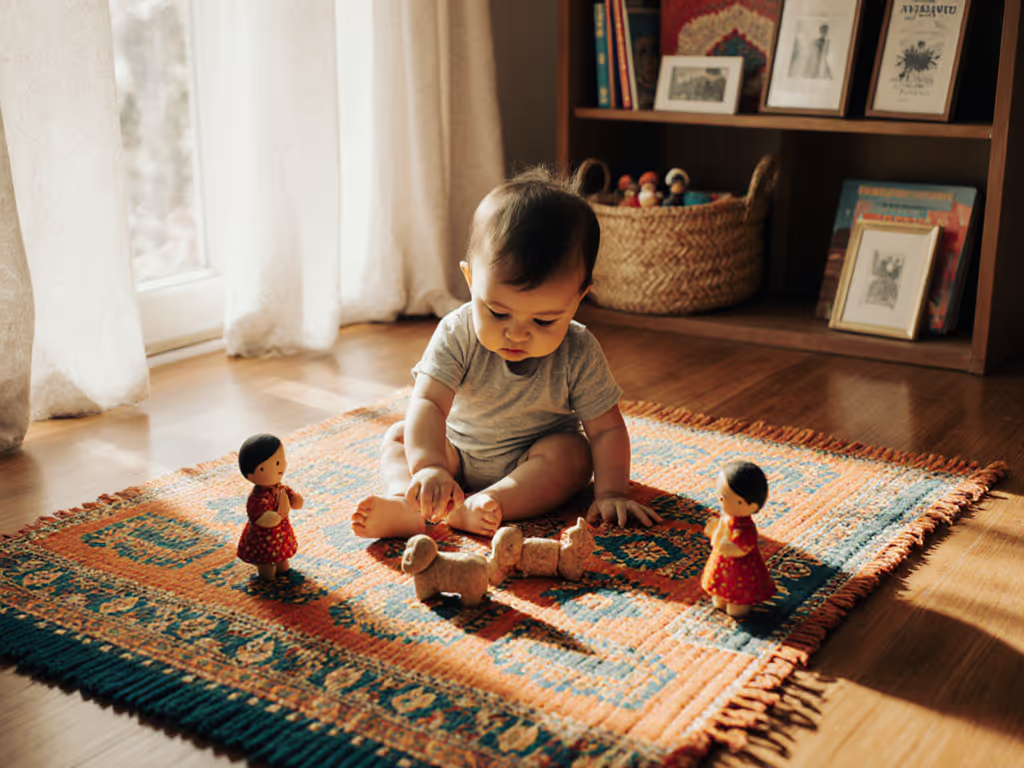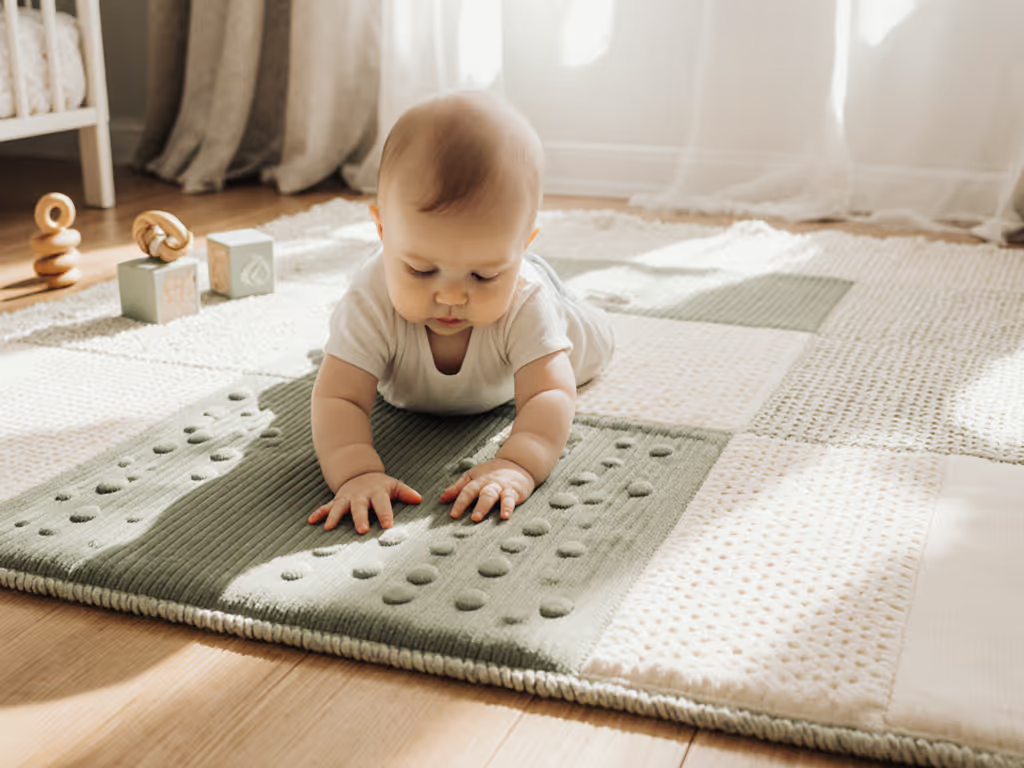
Baby Play Mat Growth: Milestones From Newborn
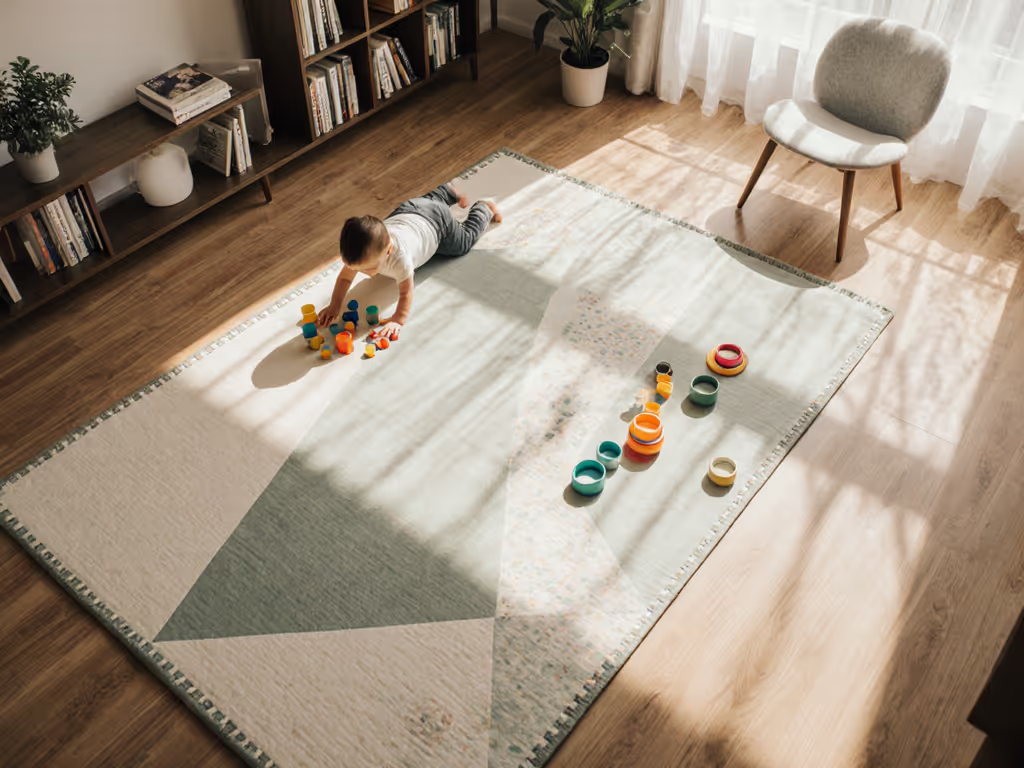
When your newborn arrives, you quickly realize that the right baby play mat isn't just a pretty surface (it is developmental infrastructure). In my small apartment with hardwood floors, I learned this the hard way: we bought three cheap mats in six months before confronting the pattern of corner curl, cracked foam, and constant replacement clutter. What began as a $30 purchase became a $90 headache with zero aesthetic harmony. I built a simple price-per-month sheet that transformed how I evaluate any baby gear. The mat that finally worked didn't just survive toddler tumbling; it paid for itself through longevity. Value is measured in months of use, not checkout numbers.
Matching Your Mat to Developmental Milestones
Many parents make the mistake of buying a mat thinking only about tummy time, only to find it inadequate when rolling, sitting, or crawling begins. A proper baby play mat should support your child's entire early development journey, not just the first few months. Let's break down what your mat needs to accommodate at each stage. For stage-by-stage activities that complement these milestones, see our developmental play mat guide.
0-3 Months: Building the Foundation
During a newborn's earliest days, your mat's primary role is supporting controlled tummy time sessions. Pediatric guidelines recommend starting with just 1-2 minutes, 2-3 times daily, gradually increasing to 15-30 minutes by 3 months. The right mat here provides:
- Sufficient firmness to support neck control development (overly soft mats can hinder motor skills development)
- Non-slip backing that works with your specific floor type (hardwood, laminate, or low-pile carpet)
- Cleanable surface for inevitable spit-up and diaper leaks
The Infantino 4-in-1 Deluxe Twist & Fold Activity Gym & Play Mat addresses this phase with its included bolster pillow and mirror for tummy time engagement.
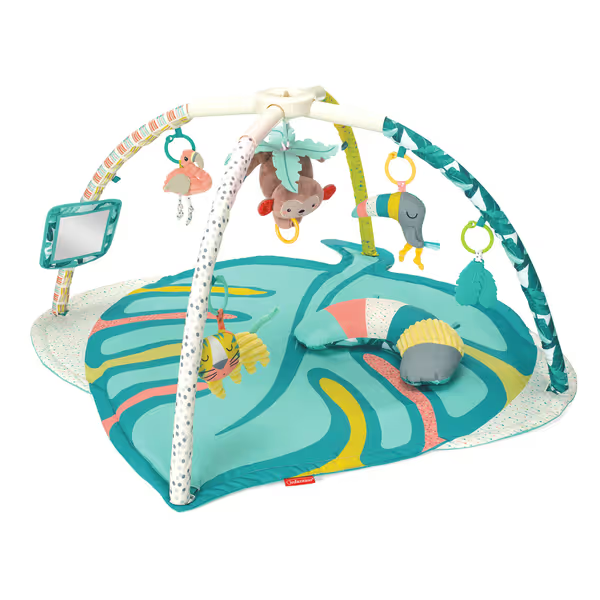
Infantino 4-in-1 Deluxe Twist & Fold Activity Gym & Play Mat
3-6 Months: Rolling Into Action
This is when you'll see the mat's true developmental value. As babies master rolling from belly to back (2-4 months) and back to belly (4-6 months), your mat needs to:
- Provide gentle cushioning for those inevitable head bumps
- Maintain stability during vigorous movements
- Support extended tummy time sessions (up to 1 hour total daily)
This stage is where cheap mats often fail: edges curl as babies push against them, seams separate under pressure, and thin padding compresses permanently. The sensory development play mats that succeed here use materials that balance firmness for development with cushioning for safety.
6-9 Months: Sitting, Reaching, and Preparation
As your baby begins to sit unassisted, you'll notice how much the mat's surface impacts confidence. Wobbles and topples are normal learning experiences, but a mat that's too soft won't provide the resistance needed for balance development. Key features for this phase:
- Consistent surface density (no uneven compression)
- Adequate size to prevent rolling off edges
- Material that doesn't bunch or slide on your floor type
This is where many parents feel the pain of short-sighted purchases. A mat that seemed spacious for tummy time becomes dangerously small as mobility increases, forcing awkward replacements.
9-12+ Months: Crawling and Beyond
Surprisingly, this is where most baby play mat longevity is tested. Your "baby" mat now needs to:
- Withstand toddler weight and activity
- Maintain non-slip properties as it gets dirtier
- Resist stains from food, paint, and other toddler creations
Many parents don't realize their mat must adapt to infant cognitive development that now includes imaginative play and more complex movement. A mat that transitions well becomes a versatile play zone that lasts well into the toddler years.
The Price-Per-Month Calculation: What Your Mat Really Costs
Let's examine the math that changed my approach to baby gear. Consider two scenarios:
Scenario 1: Cheap mat ($25) that lasts 4 months before showing wear (curling edges, compressed padding, fading colors)
Scenario 2: Premium mat ($120) that lasts through 24 months of daily use
At first glance, the $25 option seems smarter. But calculate differently:
- Scenario 1: $25 ÷ 4 months = $6.25 per month
- Scenario 2: $120 ÷ 24 months = $5.00 per month
Price per month beats sticker price for real-world value.
This simple calculation ignores hidden costs that make the cheap option even less economical:
- Replacement shipping costs ($8 each)
- Time spent shopping/researching again
- Inconvenience of finding temporary solutions
- Aesthetic mismatch with your home requiring additional decor adjustments
When I built this spreadsheet for my third mat replacement, I realized we'd spent more on cheap mats than a quality one would have cost, and we still had no reliable play surface. The mat that finally worked didn't just replace all three previous purchases; it lasted through toddler years and sold for half value when we no longer needed it.
Making Your Mat Milestone-Ready from Day One
The most financially literate approach isn't just buying the most expensive mat (it is selecting one that earns its space through multiple developmental stages). Consider these practical criteria through the price-per-month lens:
Space ROI (Return on Inches): In small homes, every square inch must pull double duty. Measure your available space against milestone needs:
- Newborn: 36" x 36" minimum
- Rolling phase: 48" x 48" minimum
- Crawling: 60" x 60" minimum
Rather than buying multiple mats as your baby grows, select one that meets your future space needs from the beginning. This avoids the cost and clutter of multiple purchases.
Material Longevity: Not all play mats age equally. Look for:
- Seamless construction (no puzzle tiles that separate)
- Top-layer materials resistant to scratching and peeling
- Backing designed for your specific floor type
- Third-party certifications for durability testing
Adaptive Features: The best motor skills play mats evolve with your child:
- Removable arches for activity gyms
- Reversible designs that refresh the look
- Non-toxic materials that remain safe if chewed (relevant through at least 18 months)
The Verdict: One Mat Through Multiple Milestones
After analyzing dozens of options through my spreadsheet-inclined lens, the clear winner isn't the cheapest option or the most expensive, it is the one that delivers maximum months of reliable use per dollar spent. Your ideal baby play mat should:
- Support all developmental stages from newborn to toddler
- Maintain integrity through daily use and cleaning
- Blend with your home aesthetics to avoid "stashing away" when guests arrive
- Come with transparent warranty terms that acknowledge real-world use
- Provide clear resale pathways when you're ready to pass it along
Price per month isn't just a number, it is the metric that separates impulse buys from investments. When your baby's first rolling attempts lead to confident crawling, you'll appreciate not just the developmental support, but the financial wisdom of choosing a mat that earns its space through every milestone. The math is simple: when you calculate value over time, there's no substitute for durability designed for the long journey of parenting.
Related Articles

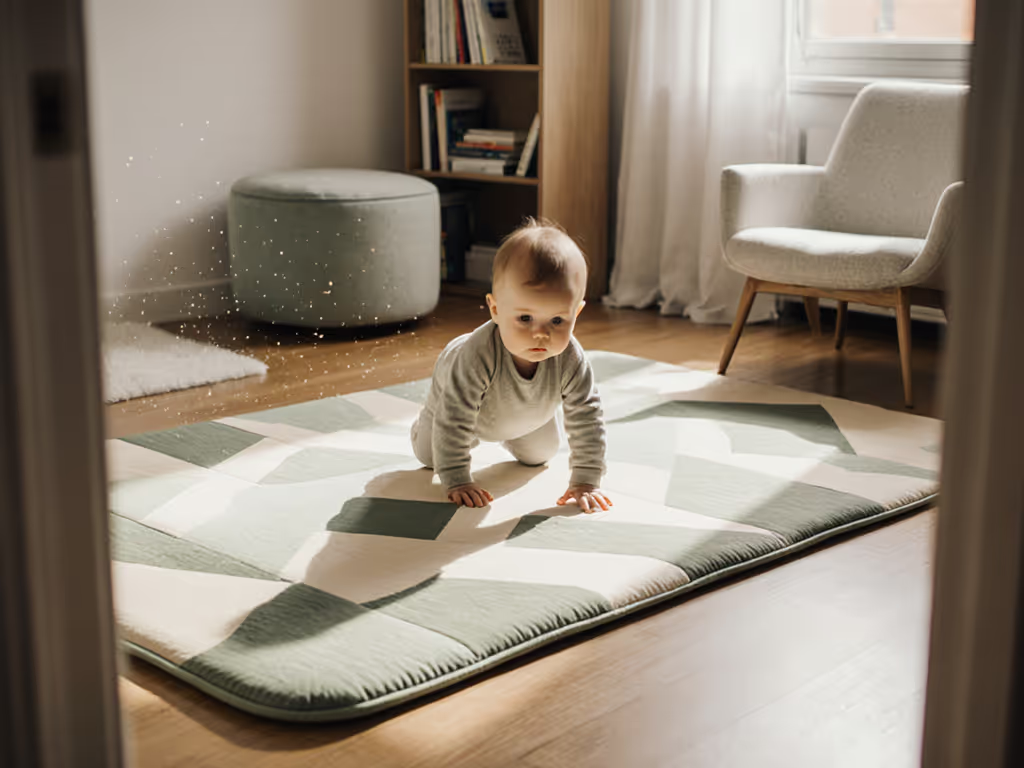
Motor Skill Play Mats: Space-Smart Baby Development Surfaces
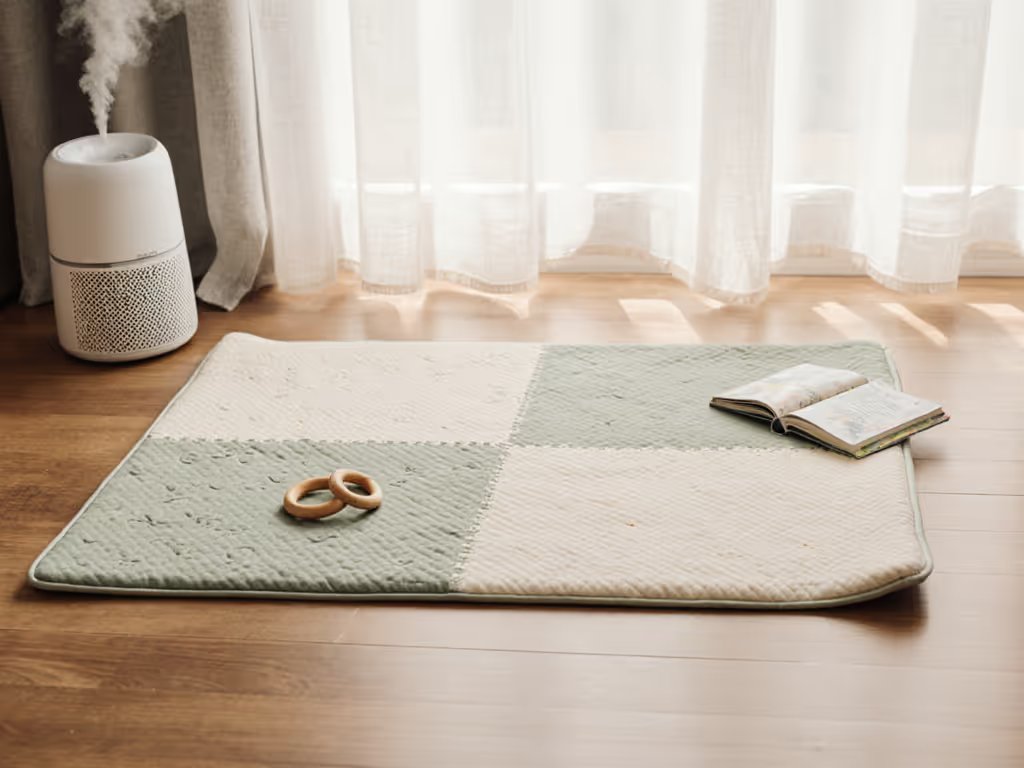
Preemie-Safe Play Mats: Evidence-Based Selection Guide
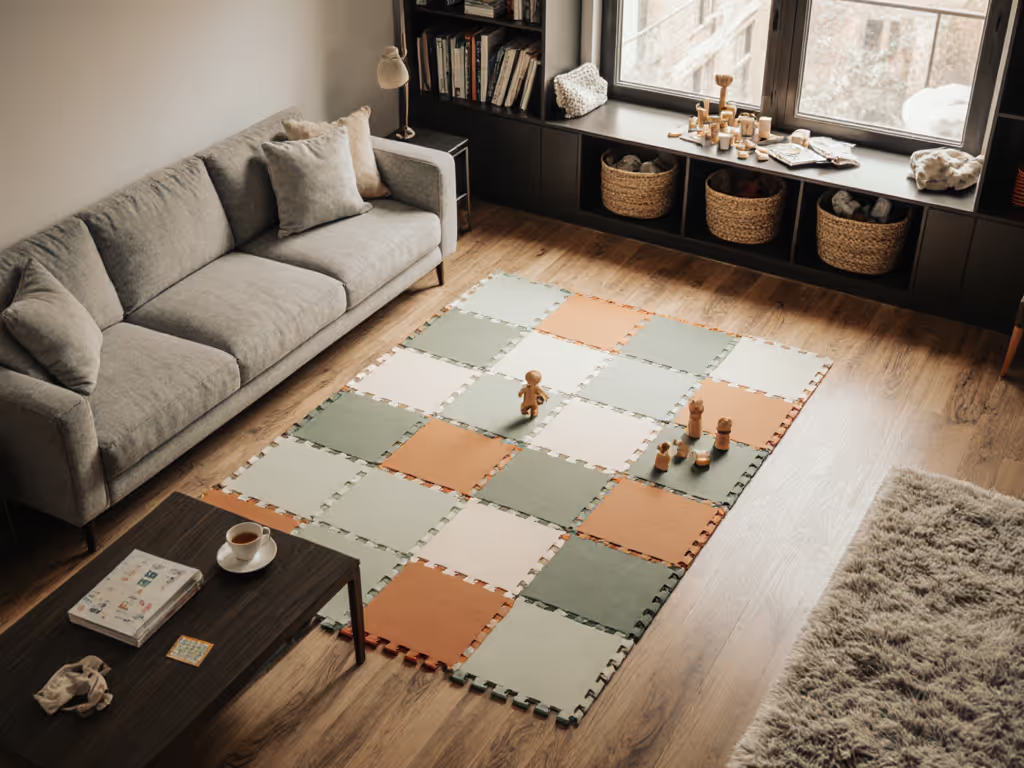
Multi-Gen Play Mat Setup for Shared Living Spaces
